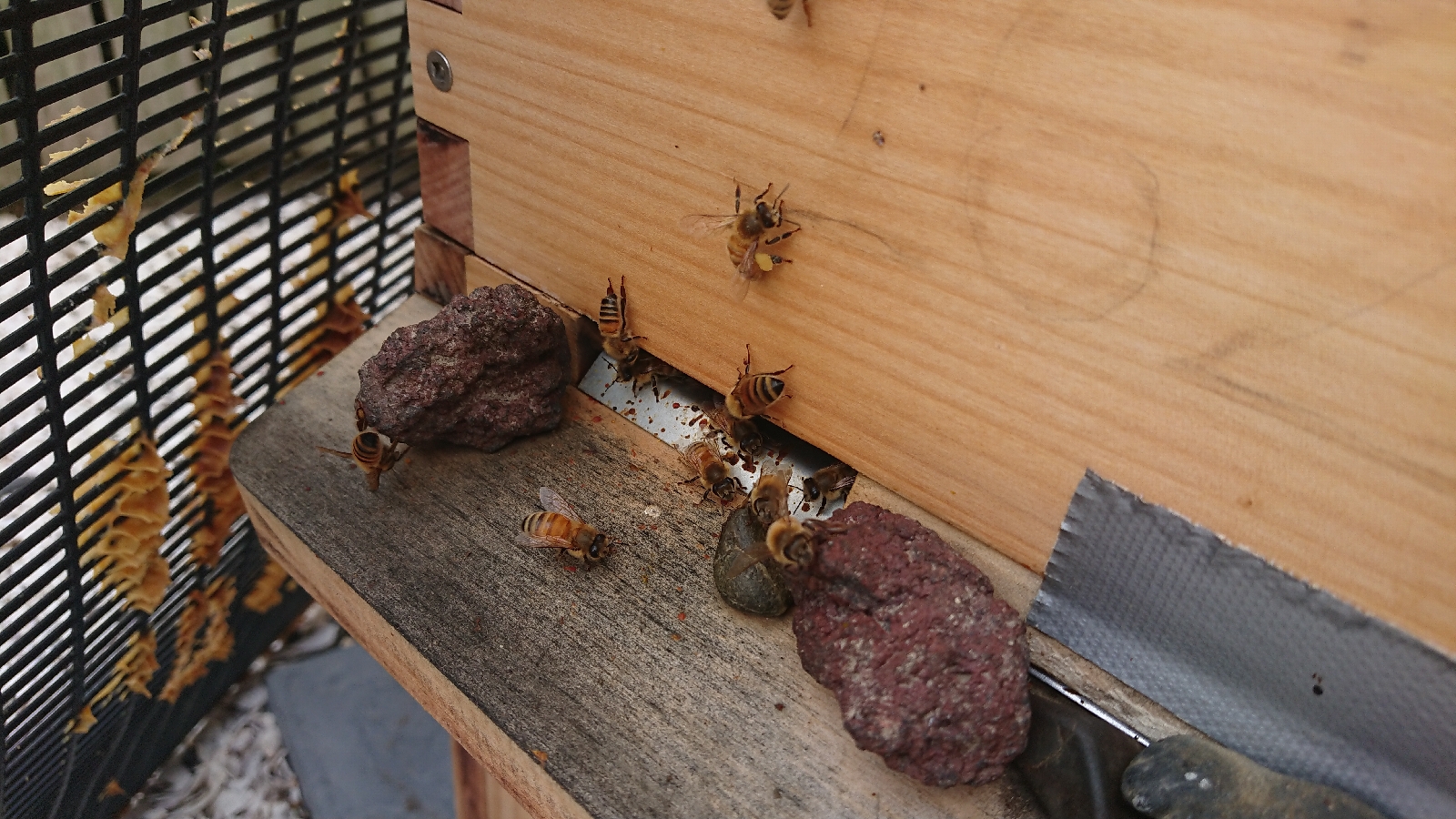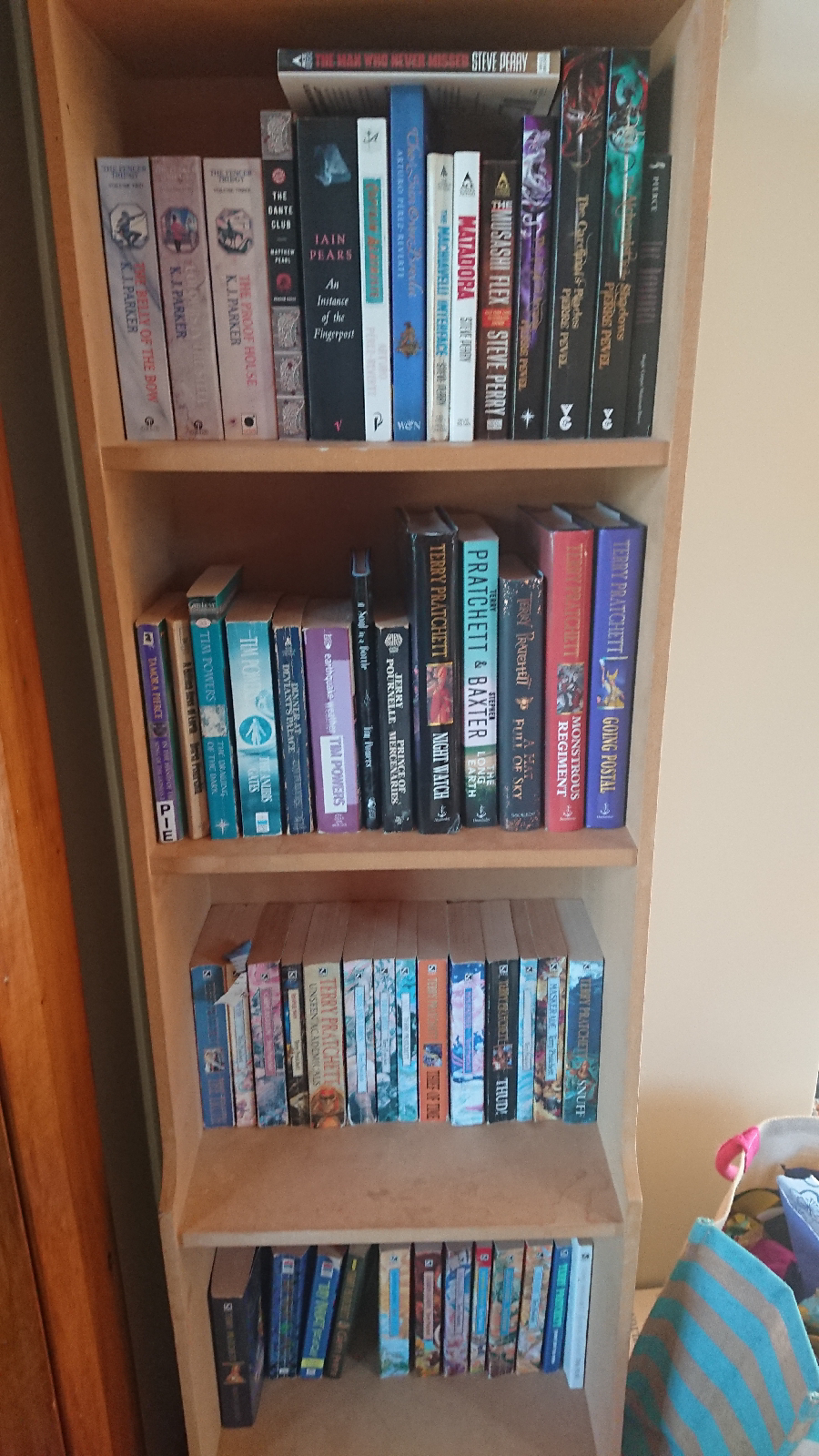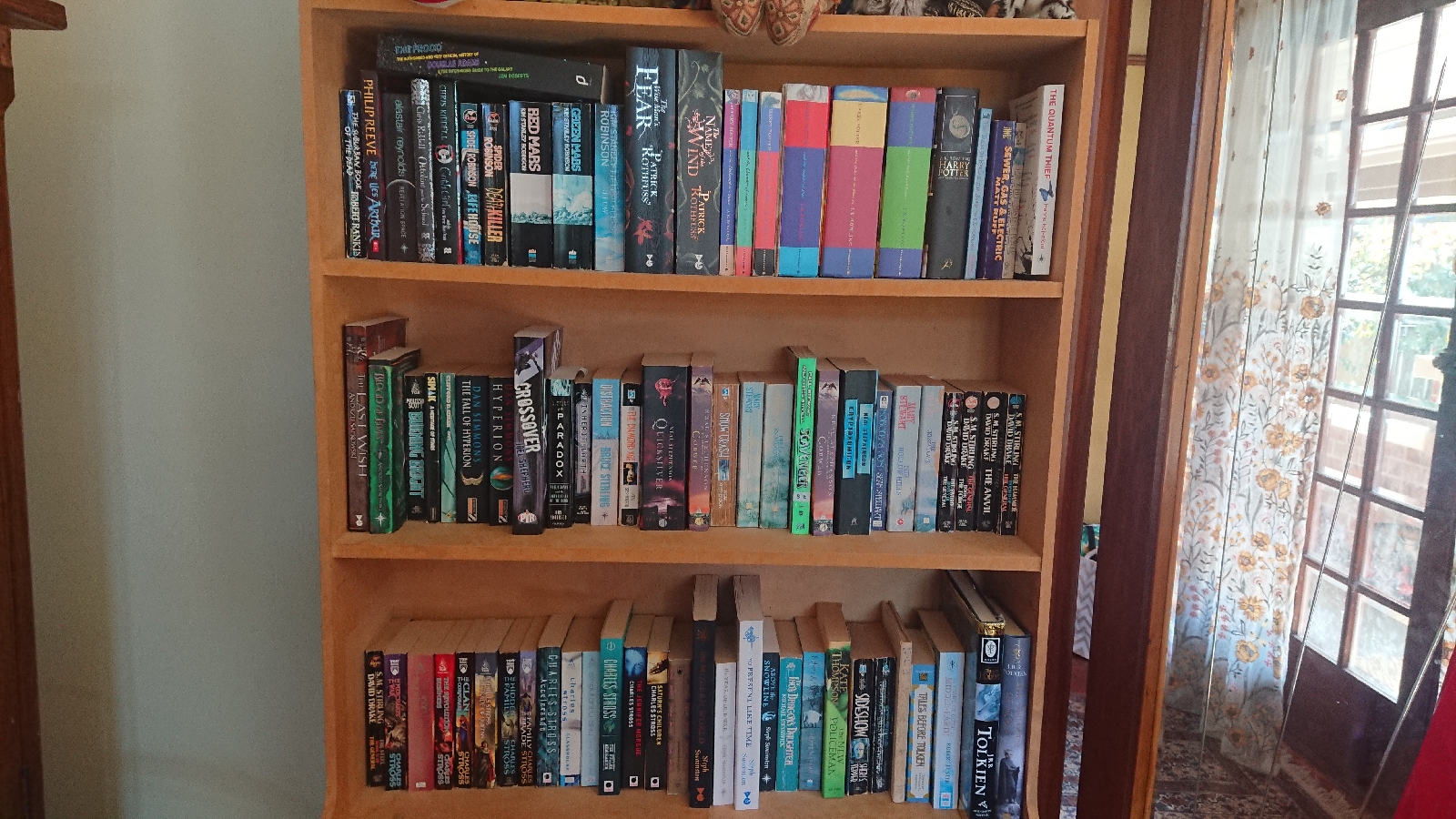I thought I'd be taking photos of my bees today, and maybe I will, but first I have been taking photos of my bookshelves.
For a few years now I've been "borrowing" books from my Aunt Ruth's shelf of mysteries. I don't actually borrow them because her shelf is a world away, but when I'm choosing a new series to download I look at these pictures and find an author. Occasionally I chat to her about what I'm reading (it's Amanda Cross and Faith Martin at the moment, both of whom have pleasingly intelligent protagonists).
Now our public libraries have closed I have been taking photos of my bookshelves so my parents can choose books to borrow, and while thinking about how to share the photos with them it occurred to me that those of my friends who are doing health distancing around the world might like to "borrow" my books like I "borrow" Aunt Ruth's.
Fair warning: just because we own it doesn't mean I recommend it.
Above: study bookshelf, from the top it's theoretical cooking and practical coding, world enough and time.
Below: SF and fantasy,
Compilations and Aaronovitch to Card (top) and
Bujold to Colfer (bottom).
The piles to the sides of the shelf above are philosophy, mostly about Mind though there's some other philosophy too.
Below: SF and fantasy,
Crowley to Gaiman (top) and
Gentle to Heinlein (bottom).
Below: SF and fantasy,
Herbert to McKinley (top)
MacAvoy to Paolini (bottom).
Above: The pile to the right is psychology.
Below: SF and fantasy,
Parker to Pratchett.
Below: SF and fantasy,
Rankin to Tolkien (top) and
Tolkien to Zimmer (bottom).
Below:
Maths, various science, astronomy and religion, politics, law, economics.
Below:
Hallway bookcase
Top two shelves: general fiction by size.
Next two shelves: non-fiction categorisation L-R but shelved by size: Buildings and craft, gardens and plants, biology, animals (molluscs, insects, dinosaurs+ birds, mammals, humans).
Above: lower shelf fiction including mysteries.
Below: upper shelf bigger general fiction,
Other shelves: art and craft, also biggest fiction.
Below:
Top shelf music books
Otherwise fiction and picture books for people of various ages, upper shelves for taller readers.
Below: more fiction and picture books for people of various ages, upper shelves for taller readers.
Board games:





















































